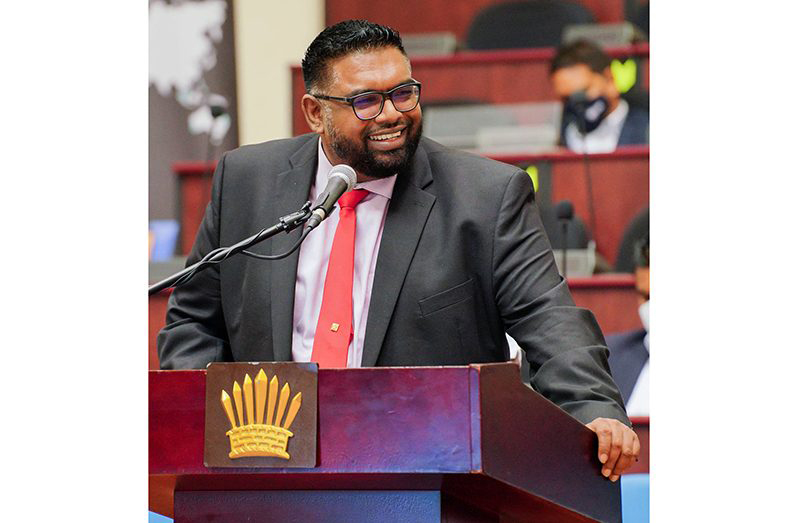
– as GPL conducts a critical needs assessment of its operations
By Navendra Seoraj
Guyana Power and Light (GPL) aims to shed light on the fundamental problems affecting its operations, as it has undertaken a “needs assessment” to identify specific and critical requirements, which, in addressing them, boost the efficiency of the service offered to Guyanese.
For years, consumers have consistently complained about their inability to enjoy a reliable power supply, as blackout flows have been common due to some operational issues at the utility company.
In August, after being elected to office, the new government found that the national grid provided 120 megawatts of electricity, an amount equal to consumer demand of 117-120 megawatts of power; this leaves no room for backup power.
Since then, there have been major capital injections into the company to address this and other issues, but the President, Dr. Irfaan Ali, said that GPL had recently been advised to identify the gaps in the system and decide what it needed to be. reliable and stable power supply.
According to the United Nations Development Program (UNDP), access to modern energy services, of which reliable electricity is a part, is fundamental to meeting basic social needs, driving economic growth and boosting human development. This is because energy services have an impact on productivity, health, education, safe water and communications services.
For developing nations like Guyana, the need for reliable and affordable energy is more fundamental. The general understanding is that, in these countries, reliable energy supports expanded industry, modern agriculture, increased trade and better transport.
Guyana, on the threshold of economic transformation, driven by development in its other petroleum and productive sectors, will rely heavily on reliable energy. Therefore, the assessment by GPL will provide the basis for building confidence in the local power supply.
Only in March, due to numerous power cuts, Prime Minister Brigadier Mark Phillips convened a meeting among key stakeholders, and said the company’s fault identification system will be upgraded.
“We are aware that GPL is making some extensive repairs to the transmission and distribution system and that is the main reason for the cuts,” said the prime minister.
LANGUAGE

He nevertheless lamented that the transmission and distribution system had weakened as it had not been maintained consistently over the last five years.
In an invited comment on the fringes of an event at the President’s Office last week, President Ali said: “The last discussion we had with GPL is to offer the gap in what is needed for a stable, reliable supply, and that is what they are is doing it now and that evaluation will be done this week [last week].
“But we have to make investments as necessary, so that every citizen has an equal power supply.”
It has recently been reported that a GPL system will be upgraded to bring much-needed relief to thousands of citizens, but this is not the only area that the government hopes to upgrade, to improve power generation and supply.
The 2021 National Budget includes $ 240 million allocations for the Sustainable Energy Program; $ 628.8 million for the Renewable Energy Enhancement Power System Project; $ 750 million for the Energy Matrix Diversification Program; $ 500 million for the Solar System Project; $ 125 million for the Small Electricity Projects; and an estimated $ 202.5 million has been allocated to hinterland electrification.
In addition, an estimated total of $ 3.1 billion has been allocated to power companies across Guyana: $ 172.5 million for Lethem Power Company, $ 490 million for Kwakwani Utilities Inc., $ 2.3 billion for LINMINE, $ 30 million for Mabaruma Power Company, $ 50 million for Mahdia Power and Light, $ 10 million for Moruca Power and Light, $ 15 million for Matthew’s Ridge Power and Light and $ 50 million for Kaituma Port Power and Light.
While the government’s plans for energy are clear, President Ali, speaking further on the issues of power supply, said: “What has happened is that when we came to government, we saw this system that is kept to a minimum and this has done so come to us now from various explorations … the networks, transformers, circuits, tremendous difficulties, and we have been investing to correct these difficulties. We have been investing in capital acquisitions for our power generation capacity. ”
NEW INTRODUCTION
In June, construction of a new GPL substation is expected to be completed, boosting Demerara-Berbice Interconnected System (DBIS) power supply by 46.5 Megawatts (MW).
Power Producers and Distributors Incorporated (PPDI) is responsible for a total electrical output of 106.7 megawatts within the DBIS, coming from four power stations, Garden of Eden (22 MW), Kingston # 1 (22MW), Kingston # 2 (36.3 MW) and Vreed-en-Hoop (26.4 MW).
The additional 46.5 MW power supply will be generated by five new US $ 41 million dual-fuel generating sets that arrived in Guyana on November 5, 2020.
“We have been providing funding [to GPL]… After that needs assessment, we’ll have an idea of the additional requirements, so that’s what we’re looking at, ”said President Ali.
Earlier this year, Prime Minister Phillips also said: “Our government will now work relentlessly to implement the necessary measures that will lead to a better quality of life for our people by producing and providing adequate power, stable and reliable. ”
He reiterated the government’s vision for the future of energy provision in Guyana, which includes the addition of over 400MW of newly installed capacity and a reduction of energy cost by at least 50 per cent through provisions of a mix of energy sources that include hydropower , natural gas, solar and wind.